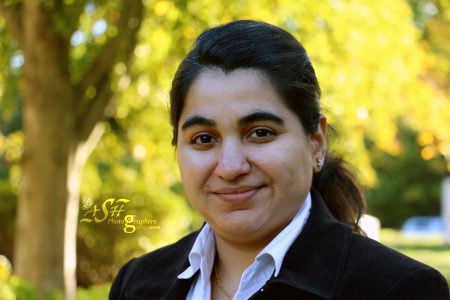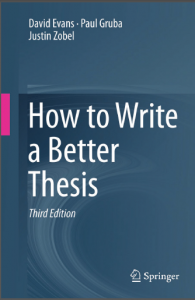By Ambreen Shehzad Hussaini
Have you ever experienced the joy of learning? Did you know learning is a “process,” not a “product”? Do you recognize that you are not solely a content learner; rather, you are a complex social, emotional, and intellectual being? Did you know that stress hinders your academic success? If this is true, how can you manage your stress and gain academic success?
Today, I would like to share a very important lesson that I learned while working at the Centre for Academic Communication. My primary responsibility here is to provide academic communication skill support and to help students to be self-directed learners. However, there are moments when I feel I am not coaching them to improve their academic communication skills; instead, I am helping them to be emotionally intelligent and to manage their stress. During conversations with students, I learned a life-long lesson that intellectual competence is intricately linked with emotional stability. I recognised that students must know how to manage the stress, particularly university graduate students who are stepping in the academic world with high aspirations. I observed that students make every effort to achieve higher grades. They spend sleepless nights drafting their writing assignments and preparing for exams. One thing the students often ignore, in my view, is to be emotionally intelligent so that they can experience the joy of learning. Let me briefly explain what emotional intelligence is, and how it is related to experiencing the joy of learning.
Emotional intelligence is your ability to recognize, evaluate, and express your emotions. It also helps you to regulate your feelings and to use your sentiments in identifying and solving challenges, making efficient decisions, and communicating with others. In other words, emotional intelligence can make you a self-aware, self-motivated, self-regulated, and self-reflected learner. It empowers you to exercise empathy, to built positive relationship with your peers and teachers, to ask right questions, and to manage stress. Once you become aware of your own emotions and know how to use them intelligently, you become intrinsically motivated and aware of your path. You understand that learning is not acquiring A+ or A on a philosophy assignment, for instance. Learning is experiencing the moment, collaborating with your peers, and learning something new from it. Learning is a process of exploring, discovering, and knowing. Learning is excitement; it is fun. It is certainly not the source of stress. When you do not exercise your emotional intelligence and do not recognize the joy of learning, they are caught by stress and fear of failure. Indeed, stress and fear are not your good friends as they may hinder your academic success.
Let me now outline two ways to manage academic stress and gain emotional stability with the hope that my words may reach other students. I know it’s hard to make an explicit relationship between academic career and stress. Believe me; managing academic stress is a mandatory requirement to achieve academic success.
- Plan your life:
The world is indeed demanding. We play various roles in our lives and the demands are indeed different for each role. We feel stressed when we struggle or fail to respond to the demands of life. In this situation, the best thing to do is to acknowledge the limitations of self and time. We all have twenty-four hours a day, and a certain amount of physical and mental energy to work. We may not change the stressful situations according to our desires; however, we can certainly employ strategies to use our time and energy effectively. Planning is one of the strategies that can be used. Learn to make schedules and plans. Learn to prioritize your tasks. Think about your main goals and plan the steps in that direction. Do not wait for demanding situations to attack you. Rather, manage your time and energy to control the ever-evolving situations. You can start by making day plans, and then eventually move towards crafting a five-year or a ten-year plan. Remember one thing: if you have a humongous task, do not panic; rather, break it into numerous small tasks. Do not forget the golden quote “many drops of water make the ocean.” Fill each day with a drop of learning, and you will eventually be an ocean of knowledge.
- Value your life:
Life is a gift. It is valuable. It is our opportunity to learn, grow, and share. It is our chance to leave a mark in the world. Imagine, there are hundreds and thousands of people who are born with or before us. We do not know about all of them. We are aware of only those people who valued their life and shared that value with their contemporaries. Reflect on yourself and identify your strengths. Think about your weaknesses and try to make every effort to transform your weakness into an opportunity – an opportunity to challenge yourself, an opportunity to learn something new, an opportunity to experience the change in yourself. Remember, life is not a race; it’s not a battle ground either. It is a chance for you to share your values with the world. But the question is, how does valuing life impact your academic career? In a real-life setting, things are interlinked. They cannot be isolated and fixed into categories. The values of your life define your identity, your aspirations, your behaviours, your motivations, and the way you live your life.
These are just two ways to manage stress among many, and indeed, they are not new. Many people might have talked about these already. I hope that my fellow graduate students contemplate these ways and try to live a life that is intellectually stimulating and emotionally flourishing. I hope you consider your educational endeavors as a journey (a process) and experience the joy of learning.
About Ambreen
Ambreen Hussaini is a doctoral student in the Art History and Visual Studies Department, University of Victoria. She is working on the contemporary artistic expressions of the Qur’an. Ambreen is also a tutor at the Centre for Academic Communication.


